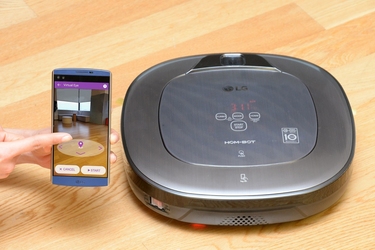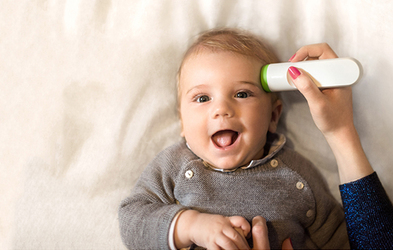It's not breaking news that CES (Consumer Electronics Show) in Las Vegas is the equivalent of a frat party for the tech industry. The male/female ratio resembles the grandstands at a football game. The booth babes (though more buff and less voluptuous these days) are plentiful and the lines at the ladies room are blessedly short. The focus on breakthroughs about the size and speed of everything tech appeals to a guy's sense of game.
But there's another side to CES, one that increasingly recognizes that the other 50% represents some real revenue potential. According to Maria Bailey, author of Millennial Moms, who addressed the CES audience, millennial moms alone are responsible for trillions of spending dollars, notably in tech, because they're tech-savvy, mobile and connected.
For the past six years the Family Tech Summit, a conference I put together at CES, has looked at how technology is changing family life. Less concerned with "size and speed," the operative word for 2016 is "smart." Smart homes, the pressure to raise smart kids and smart ways to master tech without it mastering you, were this year's hit topics.
Things We're Keeping an Eye On
Screens in (and outside) the home: The average family is upping their screen quotient. We're seeing bigger screens on mobile devices, screens on kitchen appliances, thermostats with built-in screens, and of course, new screens on wrists and now advanced tech screens in entertainment rooms.
Screens are an invitation to step into worlds of information. Mary Lou Jepsen, Chief Designer for Oculus Rift and Facebook, suggests that "screens are the most important part of any device and that 70% of our brains are devoted to processing visual images." Families are going to use everything from flexible screens to immersive VR screens as their gateway to information. Women will start trying on clothing and makeup, planning vacations and more with the proliferation of screens.
The Internet of Things (IoT): It's one thing when you can check in with your thermostat. It's an entirely different thing when your thermostat is talking to your lightbulb. And that's the why the new IoT products are particularly appealing to women. Today, according to Dan Tynan, Editor in Chief of Yahoo! Tech, one out of four US households have a smart device already. The projection for growth of connected home devices is to quadruple over the next five years. Some examples include, LG's new vacuum cleaner , Hom-Bot Turbo+ (pictured below). It uses built-in camera sensors to map out and record the home. It'll track where it has already cleaned and doubles as security camera you can check in on from your mobile device. Whirlpool's kitchen (fridge, range and dishwasher) were so smart that the range can be taught to shut itself on if you leave the house and accidentally forget to shut it. Or it can talk to your thermostat and to defrost the fridge when it's most energy efficient. The concept kitchen also serves as your nutritionist, whipping up healthy meals from your fridge's content. In the near future, its microwave will be able to sense what you're cooking and manage the cooking process.
Andrea Smith found that even the lowly lightbulb got smart. BeON's bulb can detect the sound of your fire or burglar alarm, or even your doorbell. It will light a path to safety in response. A backup battery powers the light when the power goes out. Even high tech/low tech interactions are getting smarter. HP's Instant Ink program lets your printer notify HP when ink's running low and a new shipment is on its way.
The Quantified Family: Appliances are also getting smarter, but what can they do to inform women's health and parenting? Smart family vitals were very much in vogue. How well are you brushing your teeth? How's that fever doing? Is baby sleeping through the night? Are you sleeping through the night? Hatch Baby is creating a smart diaper changing pad, quantifying everything from baby's sleep to height and weight and of course, diaper changes. Withings Thermo (pictured below) is a digital thermometer that records temperature from a point on your forehead and allows you to store and share fever records over time. Kolibree and Playbrush both turn kid's teeth brushing into a game, but also keep good records on when and how well they brush. Even the dentist can get involved via the mobile app.
Is That Data You're Wearing: Finally women got to see all varieties of eyewear, wrist wear, smart clothing and new ways to shop. I call this, the year of the sartorial web. Wisewear has a beautiful gold bracelet that not only tracks your activity and alerts you about communications, but it's also your lifeline to discreetly message friends and family should you find yourself in a bad situation. Mira, another stunning, stone studded bracelet, tracks your activity and provides gentle tips and reminds about how to stay healthy.
No shortage of giant TVs, virtual reality gear and flying drones at CES, but for women running busy families and careers, CES was eye-candy, too.
Robin Raskin is founder of Living in Digital Times (LIDT), a team of technophiles who bring together top experts and the latest innovations that intersect lifestyle and technology. LIDT produces conferences and expos at CES and throughout the year focusing on how technology enhances every aspect of our lives through the eyes of today's digital consumer.


